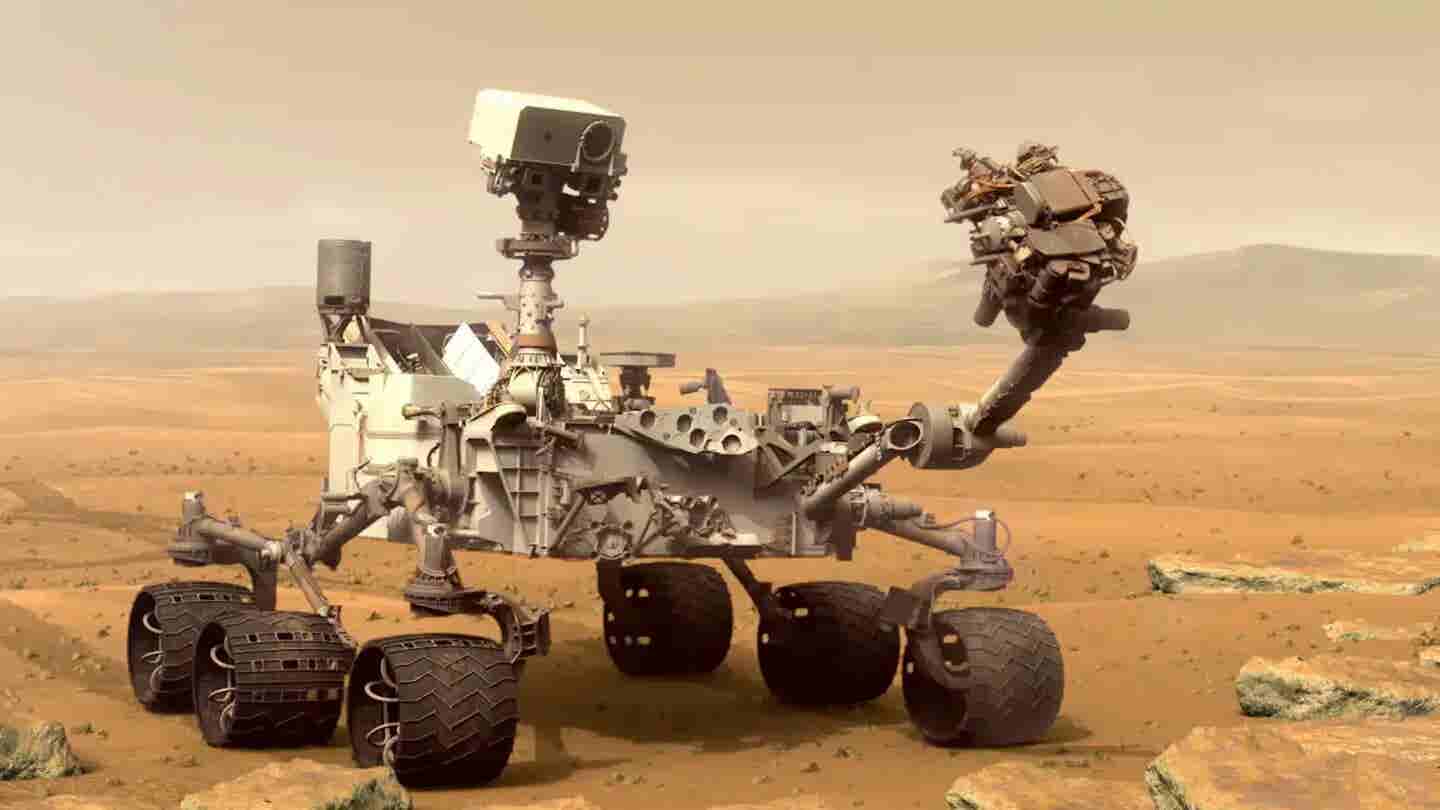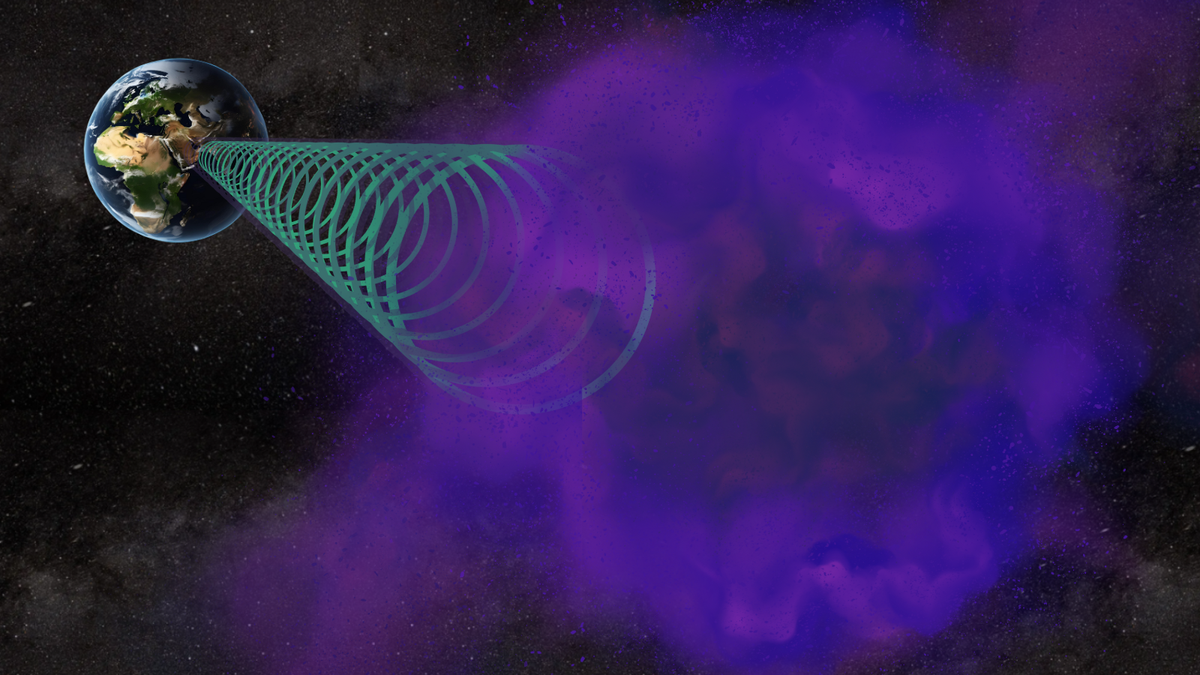NASA’s Curiosity Rover Unearths Largest Organic Compounds Ever Found on Mars
NASA’s Curiosity rover has found the largest organic molecules on Mars so far, revealing complex chemistry that may point to past life.

Largest organic molecules yet found on Mars hint at complex chemistry and possible signs of ancient life. (CREDIT: NASA)
For more than a decade, a robotic explorer has been traveling across Mars, quietly collecting clues about a time when the Red Planet may have supported life. Now, new research based on an old rock sample has revealed the largest organic molecules yet detected on Mars—pointing to complex chemistry that could have edged closer to the building blocks of life than anyone had dared to expect.
A Hidden Treasure in Martian Mudstone
Back in 2013, NASA’s Curiosity rover drilled into a patch of Martian mudstone known as "Cumberland," located in the ancient lakebed of Gale Crater. This detour from Curiosity’s planned path turned out to be critical. The site, once submerged under water for millions of years, offered a unique environment where organic molecules could concentrate and preserve in clay-rich rocks.
Years later, scientists revisited data from that drilled sample and found something remarkable. Inside the fine-grained mudstone were traces of decane, undecane, and dodecane—long-chain organic molecules made up of 10, 11, and 12 carbon atoms. These alkanes are likely fragments of fatty acids, which are crucial components of cell membranes on Earth.
"This is really searching for a needle in a haystack," said Daniel Glavin, an astrobiologist at NASA’s Goddard Space Flight Center and co-author of the new study. "There’s no question about it. We have three needles."
The Significance of Long-Chain Organics
These molecules might not mean life was ever present, but they offer strong evidence that prebiotic chemistry advanced further on Mars than previously known. Fatty acids can form both through biological activity and through purely chemical means, like interactions between water and rock in hydrothermal systems.
"Even today, by analyzing Mars samples, we could detect chemical signatures of past life, if it ever existed on Mars," said Caroline Freissinet, the lead author of the study and a planetary scientist in France.
Previous missions had found simple organic compounds—small molecules made up of just a few atoms—but the discovery of larger carbon chains indicates the chemistry on Mars may have reached higher levels of complexity. Scientists believe that if long-chain fatty acids like undecanoic, dodecanoic, or tridecanoic acid once existed in Cumberland, they could have broken down into the simpler molecules Curiosity detected when the sample was heated inside its onboard lab.
Related Stories
Making Sense of Murky Data
Curiosity’s internal chemistry lab, called SAM (Sample Analysis at Mars), isn’t as powerful as instruments on Earth. It analyzes powdered rock samples by baking them at temperatures up to 1,100°C and then measuring the gases released. But the data can be messy, often resembling static rather than signals. That’s why the same sample has been studied multiple times over the years with different techniques.
In 2015, Freissinet helped identify the first Martian organic molecules in Cumberland, but their structure and origin were unclear. In 2016, another analysis of the same sample seemed to come up dry. Only much later, after months of examining overlooked blips in the data and running comparison tests using a SAM twin instrument on Earth, did the team realize they had missed something important.
They recreated Martian conditions in a lab, mixing Mars-like clay with undecanoic acid, a fatty acid. When heated in the same way as SAM would on Mars, the compound released undecane, just like the Martian sample had. Additional experiments and comparisons showed decane and dodecane likely broke off from similar fatty acids.
"Mount Sharp keeps on giving and the rover keeps on going," said Ashwin Vasavada, Curiosity’s project scientist. The mountain in Gale Crater has been a treasure trove of geological layers, each preserving a piece of Martian history.
Could These Be Clues to Life?
While the presence of these molecules is exciting, scientists can’t yet say whether they came from living organisms. On Earth, life typically produces fatty acids with an even number of carbon atoms. Of the three alkanes found, undecane could be linked to an even-numbered fatty acid and appeared slightly more abundant, but that’s not enough to be conclusive.
Meteorites have delivered fatty acids to planets, including Earth, through non-living processes. The same could have happened on Mars. It’s also possible that the acids evolved from kerogen-like particles that Curiosity previously detected. These complex macromolecules are often produced through geological, not biological, processes.
"The SAM data, it’s a mess," Freissinet admitted. But she remains optimistic. One portion of the original Cumberland sample remains unused, and the team is exploring whether they can tune SAM to detect smaller alkanes down to six carbon atoms. Detecting a clear pattern—whether the carbon chains are mostly even or odd-numbered—could point more strongly toward a biological or non-biological origin.
Preservation in Harsh Conditions
One of the most promising aspects of this discovery is the survival of these molecules over billions of years. Mars has no thick atmosphere to block harmful radiation, and its surface is constantly exposed to oxidizing chemicals. Many scientists feared that large organic molecules would degrade too quickly to be detected.
But this discovery proves otherwise. The presence of clay, sulfur, and nitrates in the Cumberland sample likely helped protect the molecules over time. Clay minerals form in water and are known to preserve organics, while sulfur can create bonds that stabilize fragile compounds. Nitrates, essential for life on Earth, also play a role in chemical preservation.
"There is evidence that liquid water existed in Gale Crater for millions of years and probably much longer," said Glavin. That extended presence of water would have provided more than enough time for life-forming chemistry to take place.
Preparing for the Next Big Step
The ultimate goal is to bring Martian samples back to Earth, where more powerful tools can uncover deeper truths. NASA’s Perseverance rover is already collecting rock cores for a future sample return mission. With access to high-resolution labs on Earth, scientists will be able to test for molecular structures that current Mars instruments cannot detect.
"If these are breakdown products from carboxylic acids, then we are seeing something very exciting indeed," said Monica Grady, a planetary scientist who was not involved in the study.
Others, like Jack Mustard from Brown University, believe Perseverance will soon uncover similar molecules. That could mean that long-chain organics are more widespread on Mars than previously thought.
Meanwhile, Curiosity’s power supply is dwindling, and its ability to drill more samples like Cumberland is limited. The team has only one more batch of the original sample left to test. "This last sample has to be perfect," Freissinet said.
Whether these molecules were made by life or through non-living chemistry, they help tell the story of a planet that once had water, clay, energy, and time—the same ingredients that allowed life to rise on Earth. As research continues, each discovery adds a new layer to the mystery of Mars.
Note: The article above provided above by The Brighter Side of News.
Like these kind of feel good stories? Get The Brighter Side of News' newsletter.
Joshua Shavit
Science & Technology Writer | AI and Robotics Reporter
Joshua Shavit is a Los Angeles-based science and technology writer with a passion for exploring the breakthroughs shaping the future. As a contributor to The Brighter Side of News, he focuses on positive and transformative advancements in AI, technology, physics, engineering, robotics and space science. Joshua is currently working towards a Bachelor of Science in Business Administration at the University of California, Berkeley. He combines his academic background with a talent for storytelling, making complex scientific discoveries engaging and accessible. His work highlights the innovators behind the ideas, bringing readers closer to the people driving progress.



